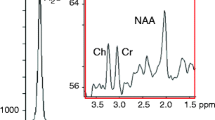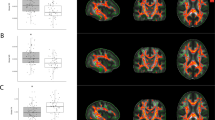Abstract
In recent years the illicit drug ecstasy (MDMA, 3,4-methylenedioxymethamphetamine) has come into widespread use among young people. Despite clear evidence for the neurotoxic potential of MDMA in animals, corresponding evidence in humans is limited to indirect findings. In an exploratory study we compared the hippocampal 1H-MRSI (magnetic resonance spectroscopic imaging) spectra of five MDMA users with those of controls with no history of substance abuse. Although 1H-MRSI is sensitive in detecting alterations in neuronal viability in association with diseases leading to neuronal degeneration, we were not able to demonstrate any differences in hippocampal 1H-MRSI between MDMA users and controls.
Similar content being viewed by others
Author information
Authors and Affiliations
Additional information
Received: 24 July 2000 / Accepted: 27 April 2001
Rights and permissions
About this article
Cite this article
Obergriesser, T., Ende, G., Braus, D. et al. Hippocampal 1H-MRSI in ecstasy users. European Archives of Psychiatry and Clinical Neurosciences 251, 114–116 (2001). https://doi.org/10.1007/s004060170044
Issue Date:
DOI: https://doi.org/10.1007/s004060170044




